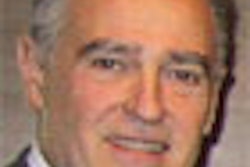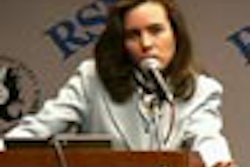VIENNA - If Wilhelm Conrad Roentgen were teaching and practicing radiology today, chances are he wouldn't be doing it in Europe, according to Dr. Jörg Debatin, chief executive officer of the University Medical Center Hamburg-Eppendorf in Hamburg, Germany. The man who discovered the x-ray in 1895 would more than likely be working at Stanford University in Palo Alto, CA, he said.
Debatin, who left clinical radiology for radiology administration 15 months ago, shared his thoughts on the necessity for European radiology to recapture the spirit and practice of innovation from the time of Roentgen and Curie during his honorary lecture, "Would W.C. Roentgen get along with hospital managers?" at the European Congress of Radiology (ECR) on Saturday.
"Roentgen, in addition to being an innovator, an inventor, a researcher, and teacher, was also a guy who really enjoyed life," Debatin noted. "For instance, he was married to the daughter of the owner of the bar he spent a lot of time at when he was a student in Zurich."
Given the current administrative climate of European healthcare, he probably would find little in the way of professional incentive to stay in his native Germany, Debatin said.
According to Debatin, who performed his radiology residency at Duke University in Durham, NC, and his fellowship at Stanford University, the U.S. has created a brain drain in Europe. He stated that "400,000 European graduates in science, medicine, and technology live in the United States."
"Every year, 30,000 more students leave Europe for the U.S., and only 13% intend to come back," he added.
The weather and the landscape of certain areas of the U.S. obviously hold a great attraction for a wide variety of people, Debatin noted. However, when it comes to the practice of radiology, he believes that there are other drivers responsible for the emigration of European talent.
"In the majority of cases, it's the professional infrastructure that drives people away," he said. "And that should give us cause to think."
Debatin related an incident of a fellow researcher in Hamburg who shared his frustration with the bureaucracy in Germany.
"You have to file a four-page application to get a used computer, only to be rejected because you made a mistake in paragraph 342," he said.
Debatin acknowledges that, unfortunately, this is the reality for a great deal of European healthcare. He believes that Europe needs to change on an institutional level if it wants to attract and keep creative minds.
He proposed a multipart plan for creating a climate of creativity for radiologic clinicians, researchers, and teachers:
- Innovation through organization
- Innovation through process
- Innovation through infrastructure
- Innovation through products
- Innovation through people
"If we want to compete in today's global market, we need to improve," Debatin stated.
One of the areas that Europe can improve is its organized funding for research and development (R&D). Overall, the European Union (EU) lags behind the U.S. by about 15% in per capita spending for R&D, according to Debatin.
Another area in which the EU can innovate is its processes for determining how academic radiologists spend their professional time. Not every radiologist wants to spend a set number of hours teaching, researching, and conducting clinical tasks. Some want to spend more in one or two areas, some less.
"People don't need to be told what to do. They need to be given the freedom to do what they do best," Debatin observed.
The addition of new research buildings and a commitment to updating facilities tackle Debatin's challenge to innovate the infrastructure.
At his institution, Debatin has created a business unit that seeks to protect, patent, and commercialize intellectual property, a product innovation at the University of Hamburg.
"We need to innovate the way we treat people," he said. "We need to look at them not as short-term phenomena, but as a long-term investment." Debatin recommended creating and encouraging ways for professionals to develop throughout their career.
Debatin believes that under the right conditions and meeting the right criteria, Roentgen would get along with some hospital managers.
"I'm pretty sure he would respect managers as long as they eliminate bureaucratic burdens, as long as they appreciate the needs of research, and preserve the freedom required for creativity," he said.
By Jonathan S.
Batchelor
AuntMinnie.com staff writer
March 5, 2005
Related Reading
Nanotechnology and new horizons: A talk with the president of ECR 2005, March 3, 2005
ECR imagines radiology's future, March 3, 2005
Professor Helen Carty scans ECR 2004, March 4, 2004
Dr. Nicholas Gourtsoyiannis looks at ECR 2003, March 6, 2003
Dr. Philippe Grenier scans the ECR, February 28, 2002
Copyright © 2005 AuntMinnie.com


















